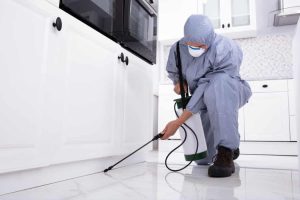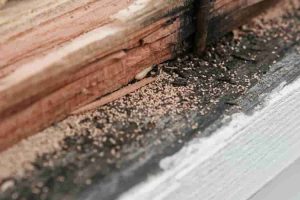Dealing with a rodent problem can indeed be both frustrating and complex. Many homeowners find themselves caught in a cycle of repeating the same mistakes, which not only allows the infestation to persist but can also cause it to worsen over time. Understanding the common errors in rodent control is crucial for effectively managing these unwelcome invaders.
In this blog post, we’ll delve into some of these frequent blunders and provide insight on how to avoid them. From preventive measures to proper trap usage, we’ll cover key strategies to ensure you can tackle a rodent problem more effectively, preventing both the stress and potential damage caused by these pests.
Overlooking the Importance of Prevention
One of the most significant common mistakes when dealing with a rodent problem in Sydney is the lack of preventive measures. Many homeowners don’t realize that prevention is the most effective form of pest control. Rodents, such animals such other pests as mice and rats, are constantly in search of environments that provide them with food, water, and shelter.
Simple oversights like leaving pet food out overnight or failing to secure trash cans can easily attract these pests into your home. Additionally, rodents can enter homes through small gaps in the walls, floors, or foundations. Sealing these entry points and maintaining clean surroundings are critical steps in preventing an infestation.
By actively removing attractants and potential entry points attract mice, you significantly the health risk and reduce the chances of a rodent infestation. This includes storing food, including pet food, in sealed containers and ensuring that trash cans are tightly closed and removed from the immediate vicinity of your home. Regular checks for gaps or cracks in the house or structure, coupled with prompt maintenance, can also keep rodents at bay. Implementing these preventive measures can save a lot of trouble and expense compared to dealing with a full-blown infestation.
Misusing Mouse Traps
Another frequent error in rodent control is the improper use of both mouse trap and rat traps. Many people underestimate the cunning of mice and rats, leading to ineffective trapping strategies that fail to catch these clever creatures. For instance, placing traps in the wrong locations or using too few traps can lead to poor outcomes. Rodents and mice tend to often follow specific paths along walls and prefer dark, secluded areas. Therefore, strategically placing snap traps and glue traps along these travel paths can significantly increase the likelihood of capturing them.
Moreover, it’s important to use the right bait and to refresh it frequently. Foods that are high in fat and protein, such as peanut butter or chocolate, tend to be more attractive to mice and rats. Also, the proper setting of traps is crucial. Traps should be set in a sensitive mode to ensure they trigger effectively when a rodent interacts with them.
Finally, regularly checking and resetting traps ensures that captured rodents are removed promptly, and traps are ready to catch more animals. By refining your trapping strategy and avoiding common pitfalls, you can enhance your garden and effectiveness in managing rodent populations.
Ignoring Rodent Control Best Practices
A common mistake and misstep in dealing with mice and rodent problems is the reliance on a single method of control in commercial establishments. While each method, whether it be baiting, trapping, or using repellents outdoors, can be effective on its own, rodents are adaptable creatures that can quickly become wary of a single strategy. To combat this, it’s crucial to employ a multifaceted approach.
For instance, using bait stations can attract rodents to a specific area, but without traps to capture them, they may simply consume or eat the bait and continue to thrive. Conversely, traps for mice alone might not be enough if not properly baited and placed.
Combining methods—like using snap traps, glue traps, and bait stations simultaneously—ensures that rodents are not only attracted to the area but also effectively captured or deterred. Additionally, including environmental management such as securing food sources and eliminating shelter can drastically reduce rodent populations.
Maintaining a diverse array of mouse control strategies and regularly rotating them can prevent rodents from developing avoidance behaviors, making your efforts more effective in being rid of the mice in the long run.
Neglecting Early Signs of Infestation
Many homeowners underestimate the significance of early signs of a rodent infestation, such as droppings, gnaw marks, or unusual noises within the house or walls. These indicators are often dismissed as minor issues until the problem escalates, allowing rodents ample time to establish nests and breed.
Early detection is key to preventing a minor nuisance house mice from becoming a major infestation. Regular inspections of less frequented areas like attics, basements, and utility rooms can help catch signs early. Homeowners should also listen for scratching sounds in walls, look for droppings around food areas, and litter, and check for damage to fabrics or wiring, which are common signs of rodent activity.
Once signs are identified, immediate action should be taken to control the population of rats before it grows. Setting traps, sealing entry points, building up and consulting with pest control professionals are effective steps to manage the serious rat situation. Early intervention not only simplifies rodent control but also minimizes the health risks and property damage associated with these pests.

FAQs
How do you deal with a rodent problem?
To effectively deal with and eliminate a rodent problem, start by identifying and eliminating sources of food and shelter for rats. Use a combination of traps, baits, and professional pest control measures. Regularly inspect your home for signs of rodents and act swiftly to identify and control small infestations before they become more serious.
What are the safety precautions in rodent control?
Safety in rodent control includes using traps and baits carefully, especially if children or pets are present. Always follow the manufacturer’s instructions when using chemical products. Wear protective gear, such as gloves and masks, when handling rodent-contaminated materials to prevent exposure to diseases.
What are the problems with rodent infestation?
Rodent infestations pose several risks to humans, including damage to property from gnawing and burrowing, contamination of food supplies, and the spread of diseases such as hantavirus and salmonella. Their presence among humans can also lead to secondary infestations of pests like fleas.
How do you outsmart a rodent?
Outsmarting a rodent involves understanding their behavior and adapting your control strategies accordingly. Use multiple control tactics simultaneously, place traps strategically where rodents feed or are most active, and regularly change your trap approach to prevent rodents from becoming bait or trap shy.
On-Time Service

5 STAR SERVICE BASED ON 100+ GOOGLE REVIEWS
PET & FAMILY FRIENDLY TREATMENT

ALL YEAR-ROUND PROTECTION
Take Back Control Now
8
REASON TO CHOOSE SAFE PEST CONTROL
- Guarantee protection all year-round
- 30 Years Collective Experience
- An impeccable reputation across Sydney's Suburbs
- Certified treatments & written Warranty On all work carried out
- Family Owned & Operated
- Rated #1 Pest Control In Sydney NSW
- No Mess, No Smell
- Family & Pet Friendly Treatments
REQUEST A QUOTE






